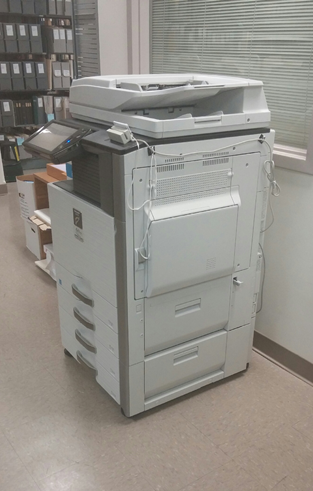I’ve enjoyed another fascinating week here as a CCEPS Fellow! This week I finished arranging Honnold/Mudd Special Collections’ Dead Sea Scrolls files. During this process, I spent the majority of my time carefully going through each file and putting everything in chronological order.
After concluding this process, I attended to the necessity of photocopying all fragile documents on acid-free paper. After making these xeroxes, I discarded the original records – which were falling apart! This allowed me to rescue content without keeping a crumbling document in the collection – one which could very well end up illegible down the road, and perhaps even damage other documents as it decayed. To illustrate: I recently encountered a decrepit newspaper clipping which seemed intent on self-destruction – and had already stained the record next to it a nasty yellow! Fortunately, we had an unharmed duplicate of the stained document, so no long-term harm was done. However, this is a good example of what can happen when cheap paper products are allowed to sit for years on end, unpreserved.
Among the materials in this collection that necessitated photocopying were any periodicals printed on inexpensive paper (particularly newsprint), carbon paper, carbonless copy paper, and thermal paper. This last item was commonly used in earlier fax machine models. As it turns out, Dr. James M. Robinson – who donated the Dead Sea Scrolls collection to us – communicated extensively by fax. This meant there was a plethora of thermal paper to be dealt with over the last week! I’m so glad Special Collections received these documents when it did, because records printed on thermal paper can fade rapidly with time, handling, and exposure to light – and the ones in this collection were doing so. Thermal paper is a highly unstable medium.
In case you’re hankering for a look, here’s an image of the oh-so-hardy photocopier on which I made many dozens of xeroxes for this collection:

And here’s Special Collections’ well-stocked, acid-free paper bank – a corner I came to know well while I worked!

As I hope you’ve seen this week, the world of archival preservation and paper chemistry is really pretty fascinating. If you’re interested in reading more, I recommend you check out Michigan State University Libraries’ piece on de-acidification. Australia’s National Archives also have some clear and helpful guidelines on paper preservation as well.